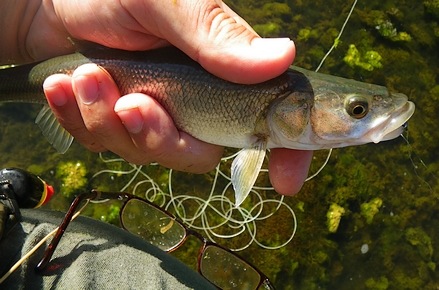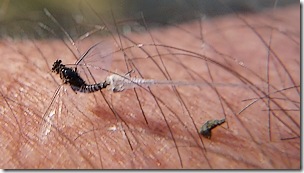For most of the year I’ve resisted the urge to muck about on the local creek, largely for fear of upsetting the delicate balance of Nature given that once the flood receded I could only count 4 fish in eleven miles of its banks.
Then again, once I saw the hurried exodus of neighbors, hastily packed luggage crammed into idling vehicles, and the vexed expressions of those waiting in the car while [insert_family_member] went one last time, I realized in addition to being the only person home this weekend, I’d have to bring my own glass to the water, as it would be the only surface absent beer cans and a flotilla of V-8’s.

And while all those vacationers hoped to rendezvous with the Pristine, be it casino-based or Mother Nature’s Original Recipe, I strode up her seamy underbelly counting noses in sync with the measured beat of tires on bridge seams.
… and the noses were suddenly plentiful and varied, much to my surprise. All that lifeless gravel now colored with a bit of welcome algae, and host to an early morning Trico spinner fall that was twice as thick as year’s past, suggesting all those shifting tons of gravel buried much of the streambed, but has been assimilated and is home for bugs as well as fish.

I landed quite a few Pikeminnow, who have always appeared to bounce back quickly, and both Bluegill and Sunfish, even hooking a holdover bass that shook me free in a deeper pool.
Most importantly, schools of small fish are visible everywhere, and plenty of largemouth and smallmouth bass are among them. The one-inch fry of Spring have turned into the four inch minnow of early fall, and while it’s easy to miss the first, the latter are large enough to be seen at distance.
The science of stream recovery has proven to be much more valuable to the fisherman than you’d suspect. While it’s certain few have any interest in a coarse fishery, plodding all these miles of riverbank is birthing the newer svelte version, and through observation has taught me where fish go when stressed, where they linger if forced from their comfort zone, and what rate can anglers count on for the natural regenerative processes to spread surviving bugs and fish throughout a traumatized watershed.
There’s enough of the Precious left for our generation to frolic in, yet it’s a comfort to know that someone’s child will have a chance to commune with Nature – or at least her coarse black heart – once the Earth’s crust warms those few fateful degrees and trout are an afterthought in the fossil record.

Hope springs eternal, and Mother Nature always bats last!
How long has it been since you were out fishing? Those coils of fly line in the background appear to have been on your reel for at least 18 months. Maybe you should consider large arbor?